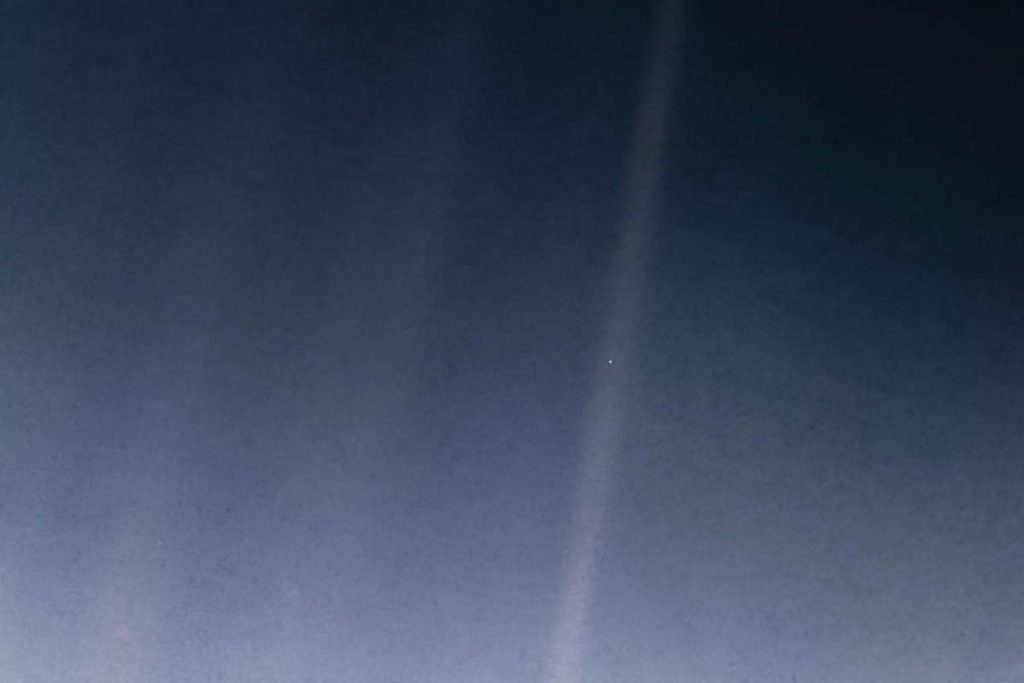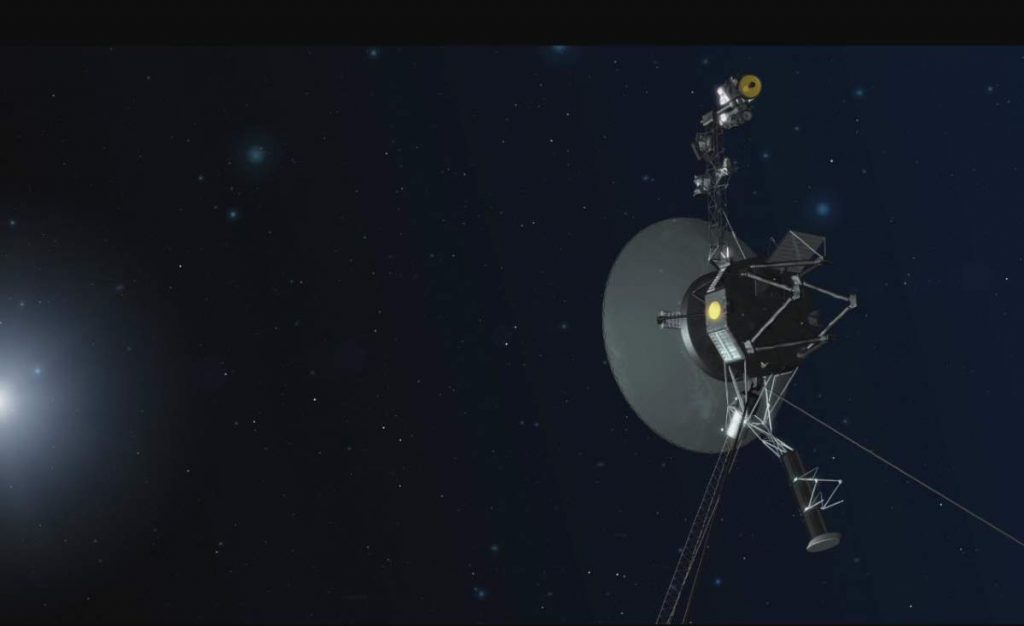The farthest spacecraft from Earth, NASA’s Voyager 1 (see notes 1) probe took a photo of planet Earth on February 14, 1990, from a record distance of about 6 billion kilometers (3.7 billion miles, 40 AU (see notes 2) from Earth. The photo is known as the Pale Blue Dot. In the photograph, Earth is shown as a fraction of a pixel (0.12 pixel in size) against the vastness of space. It was a part of the Solar System Family Portrait series of images.
The Voyager 1 spacecraft, which had completed its primary mission and was leaving the Solar System, was commanded by NASA to turn its camera around and take a photograph of Earth across a great expanse of space, at the request of Carl Sagan (see notes 3).
It quickly became the most iconic photo of Earth taken from space.
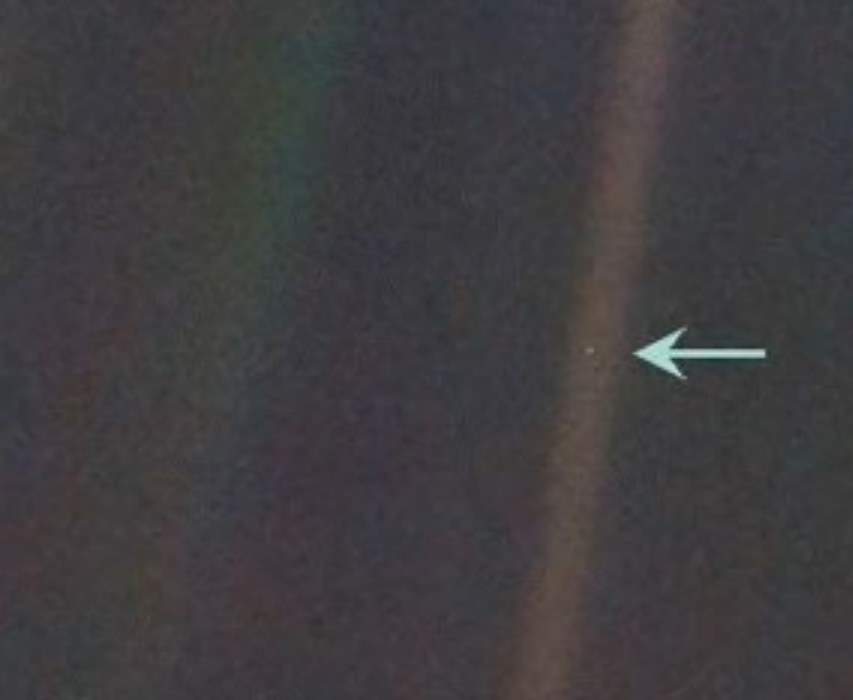
The title of the photo was used by Carl Sagan as the main title of his 1994 book, “Pale Blue Dot: A Vision of the Human Future in Space“.
“Consider again that dot [Earth]. That’s here. That’s home. That’s us. On it everyone you love, everyone you know, everyone you ever heard of, every human being who ever was, lived out their lives. The aggregate of our joy and suffering, thousands of confident religions, ideologies, and economic doctrines, every hunter and forager, every hero and coward, every creator and destroyer of civilization, every king and peasant, every young couple in love, every mother and father, hopeful child, inventor and explorer, every teacher of morals, every corrupt politician, every “superstar,” every “supreme leader,” every saint and sinner in the history of our species lived there – on a mote of dust suspended in a sunbeam.”
Carl Sagan, Pale Blue Dot: A Vision of the Human Future in Space
Notes
1. Voyager 1
Voyager 1 is a 722-kilogram (1,592 lb) space probe launched by NASA on September 5, 1977, to study the outer Solar System. The spacecraft still communicates with the Deep Space Network to receive routine commands and return data. It is the most distant human-made object from Earth.
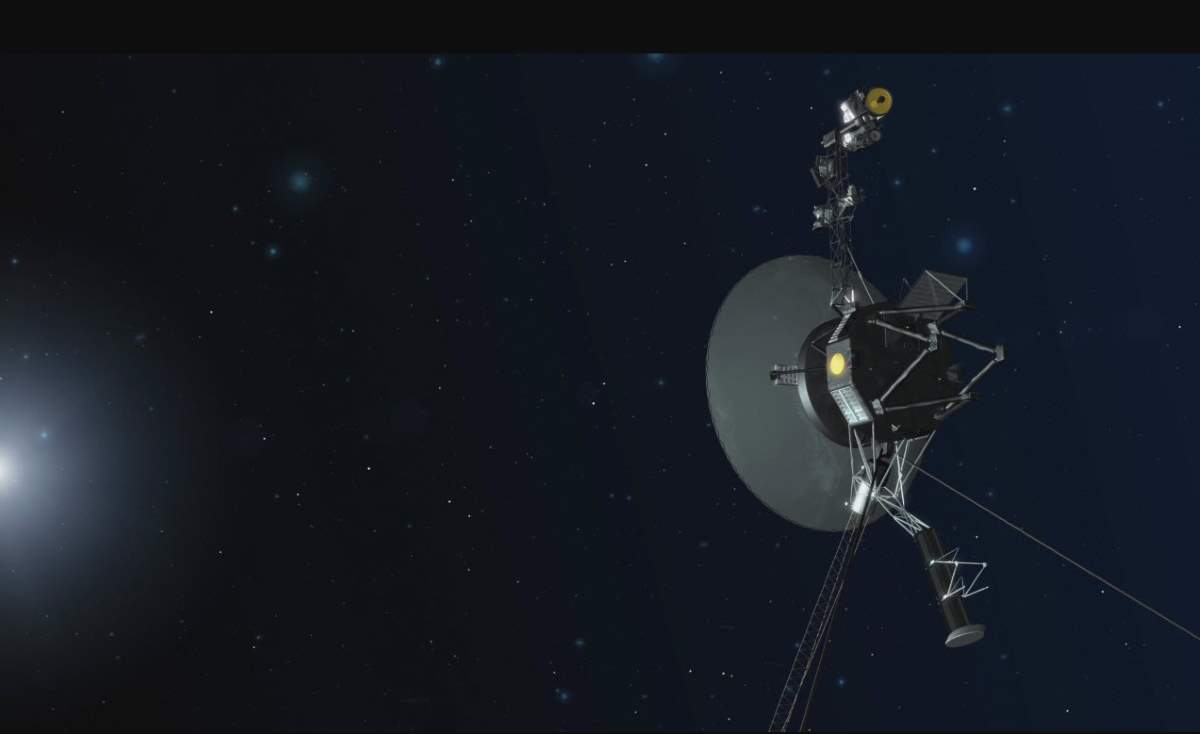
On April 9, 2013, NASA has confirmed that Voyager 1 entered interstellar space, passing beyond the heliopause, which is the boundary between our solar bubble and the matter ejected by explosions of other stars, on August 25, 2012. It became the first human-made object that crossed the threshold of interstellar space.
Voyager 1 has not yet entered the Oort cloud, though, the source region of long-period comets, regarded by astronomers as the outermost zone of the Solar System.
2. Astronomical Unit (AU)
The astronomical unit (AU) is a unit of length, roughly the distance from Earth to the Sun. Since 2012 it has been defined as exactly 149,597,870,700 meters or about 150 million kilometers (93 million miles).
3. Carl Sagan
Carl Edward Sagan (November 9, 1934 – December 20, 1996) was an American astronomer, astrophysicist, cosmologist, author, science popularizer, and science communicator in astronomy and other natural sciences.
His contributions were central to the discovery of the high surface temperatures of Venus. However, he is best known for his contributions to the scientific research of extraterrestrial life, including experimental demonstration of the production of amino acids from basic chemicals by radiation.
Sagan assembled the first physical messages that were sent into space: the Pioneer plaque and the Voyager Golden Record, universal messages that could potentially be understood by any extraterrestrial intelligence that might find them.
He published more than 600 scientific papers and articles and was the author, co-author, or editor of more than 20 books. Sagan is known for many of his popular science books, such as The Dragons of Eden, Broca’s Brain, and Pale Blue Dot, and for the award-winning 1980 television series Cosmos: A Personal Voyage, which he narrated and co-wrote.
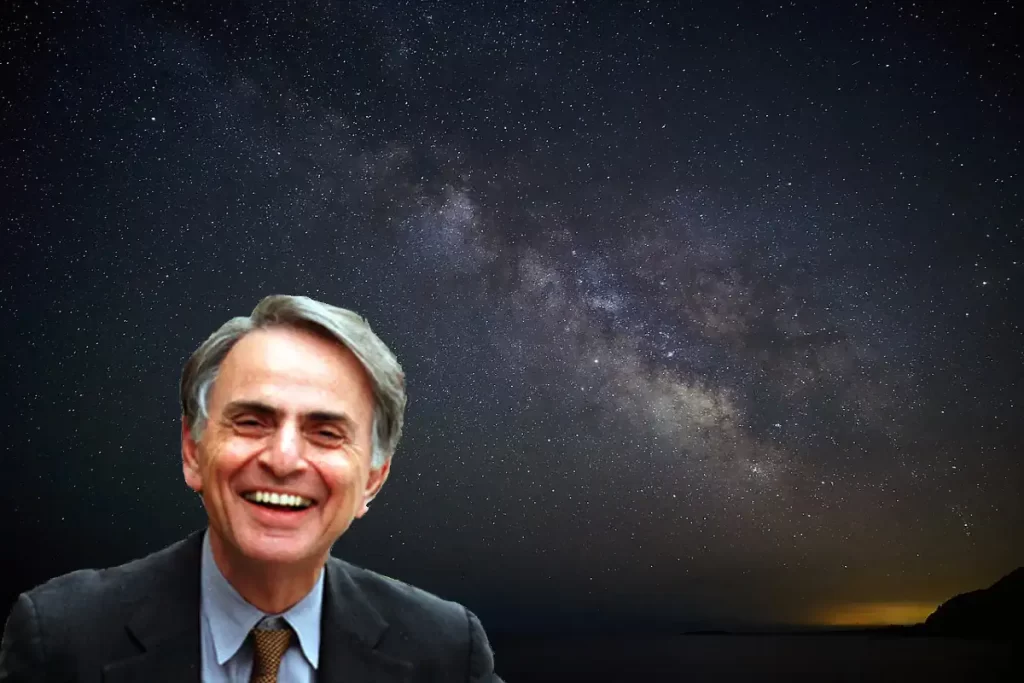
Related: Top 10 Carl Sagan Quotes
The most widely watched series in the history of American public television, Cosmos has been seen by at least 500 million people across 60 different countries. The book Cosmos was published to accompany the series. He also wrote the science fiction novel Contact, the basis for a 1997 film of the same name.
Sagan always advocated scientific skeptical inquiry and the scientific method, pioneered exobiology, and promoted the Search for Extra-Terrestrial Intelligence (SETI). He spent most of his career as a professor of astronomy at Cornell University where he directed the Laboratory for Planetary Studies.
Sagan and his works received numerous awards and honors, including the NASA Distinguished Public Service Medal, the National Academy of Sciences Public Welfare Medal, the Pulitzer Prize for General Non-Fiction for his book The Dragons of Eden, and, regarding Cosmos: A Personal Voyage, two Emmy Awards, the Peabody Award, and the Hugo Award.
He married three times and had five children. After suffering from myelodysplasia, Sagan died of pneumonia at the age of 62 on December 20, 1996.

Sources
- Voyager 1 on Wikipedia
- Carl Sagan on Wikipedia
- Budget of NASA, Year by Year [1980-1989] - June 10, 2024
- Budget of NASA, Year by Year [1970-1979] - June 10, 2024
- Budget of NASA, Year by Year [1958-2024] - June 10, 2024

